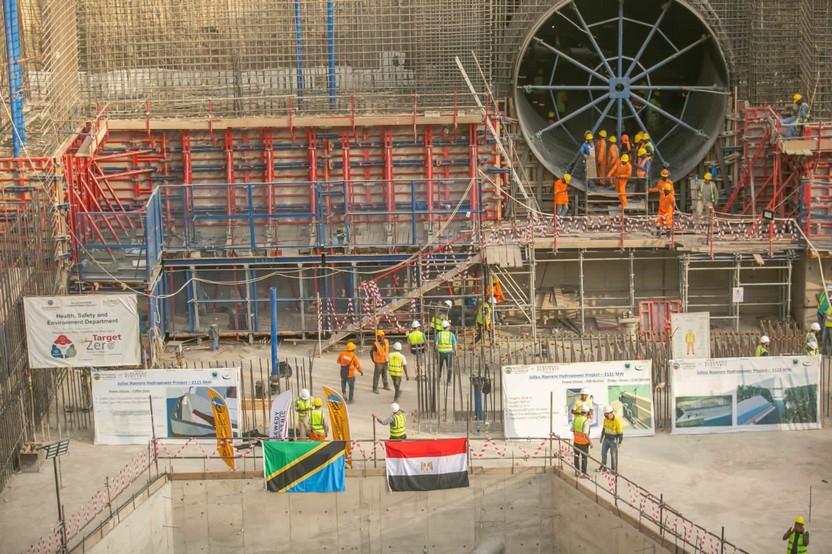Tanzania’s economy is swiftly ascending to prominence as the nation, located on Africa’s eastern coast, emerges as a burgeoning economic powerhouse. This remarkable transformation is attributed to mere chance, strategic policymaking, visionary leadership, and unwavering dedication to progress.
Over the past decade, Tanzania has showcased an impressive annual economic growth rate of six to seven percent, outstripping many of its regional counterparts. With an average real GDP growth rate of +5.5% over 2012-2021, Tanzania is among the fastest-growing economies in Africa and the world.
During the same period, the average global GDP growth rate was +2.3%, and the GDP growth rate in Sub-Saharan Africa was +2.7%. The Tanzanian economy maintained a positive growth 2020 of +2%, while most economies were in a recession due to the impact of the Covid-19 pandemic. This growth is multifaceted, with contributions from various sectors.
Agriculture stands out, employing a significant portion of the population and playing a pivotal role in domestic consumption and exports. The administration of President Samia Suluhu Hassan has been instrumental in this growth, implementing policies that bolster farmers, promote value addition, and enhance market accessibility.
Infrastructure: The Backbone of Growth
Tanzania has embarked on ambitious infrastructure projects that promise to reshape its economic landscape. Since taking office in 2005, President Magufuli has considered infrastructure development essential for achieving Tanzania’s industrialization and development goals.
As a result, many large-scale infrastructure projects have been ongoing in the country to deliver road infrastructure, upgrade the country’s railway systems and airports, and increase and diversify the country’s energy supply through natural gas and hydropower facilities, to name but a few.
While infrastructure projects promise revenue, employment, economic growth, and positive development, the sector’s rapid expansion also raises its potential for adverse impacts on the communities and environments in which projects are implemented. The Bagamoyo port, poised to become East Africa’s largest by 2045, is a testament to this vision.
This port is expected to handle cargo volumes 25 times more than the current capacity of the Dar es Salaam port. Such projects boost regional trade, attract investors, and position Tanzania as a crucial gateway for its neighbors, facilitating their active participation in global trade.
Recognizing the pivotal role of energy in industrial growth, the Tanzanian leadership has prioritized power generation projects. Recent gas discoveries have quadrupled Tanzania’s known resources. A new gas pipeline, necessary for new gas generation from southern Tanzania to Dar es Salaam, is under construction and scheduled for completion in late 2015.
Tanzania has 1,226 MW of grid-installed generation capacity to serve its population of over 47 million and an additional 82 MW in isolated mini-grids. High reliance on expensive thermal and emergency generation sources that utilize diesel, heavy fuel oil, or jet fuel has made the sector financially unviable.
Tanzania has made progress by entering agreements with independent power producers, who bring know-how and technology, and establishing feed-in tariffs that provide many commercial terms that would otherwise delay negotiations on power purchase agreements (PPAs).
The Government of Tanzania is publicly committed to improving TANESCO’s viability through tariff reform, allowing for full cost recovery and operational improvements to the utility management. TANESCO received a 39% tariff rate increase from the regulator, EWURA, effective January 2014, increasing the average rate to 17 cents/kWh, and the Electricity Supply Industry Reform.
It also adopted a strategy and Roadmap in June 2014. Once operational, the Julius Nyerere hydropower station promises to bolster Tanzania’s electricity production capacity. This will ensure a stable power supply, catalyzing industrialization and drawing more investments.
Despite its commendable progress, Tanzania’s economy grapples with challenges, notably in infrastructure, which impedes the efficient movement of goods and services. Additionally, efforts are underway to streamline bureaucratic processes, reduce red tape, and enhance transparency, making Tanzania an attractive destination for domestic and foreign investments.
A Glimpse Into the Future
Tanzania’s trajectory under President Suluhu Hassan’s leadership looks promising. With a focus on bridging infrastructure gaps, fostering a conducive business environment, and championing sustainable economic development, the nation is set to lure more investments, diversify its industries, and generate employment.
When juxtaposed with other East African nations, Tanzania’s economy exhibits parallels and unique traits. Its growth rate, agricultural modernization, industrialization, and tourism sectors give it a competitive edge over neighbors like Kenya, Uganda, and Rwanda.
Noteworthy is the Standard Gauge Railway project, currently in its second phase, which promises to revolutionize transportation, reduce logistics costs, and spur economic growth. Tanzania’s economy reflects resilience, vision, and leadership. As the nation strides forward, the global community watches with bated breath, eager to witness the unfolding of its vast potential.
Dive into more insightful economy articles here.

